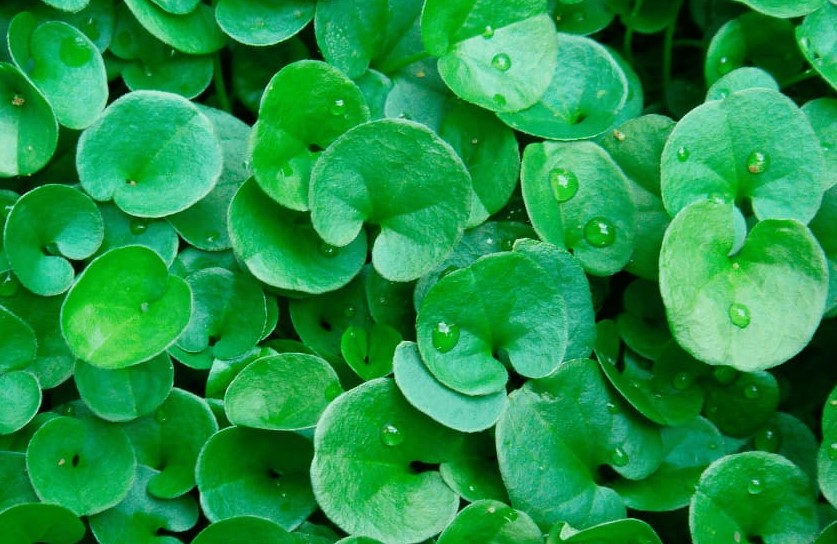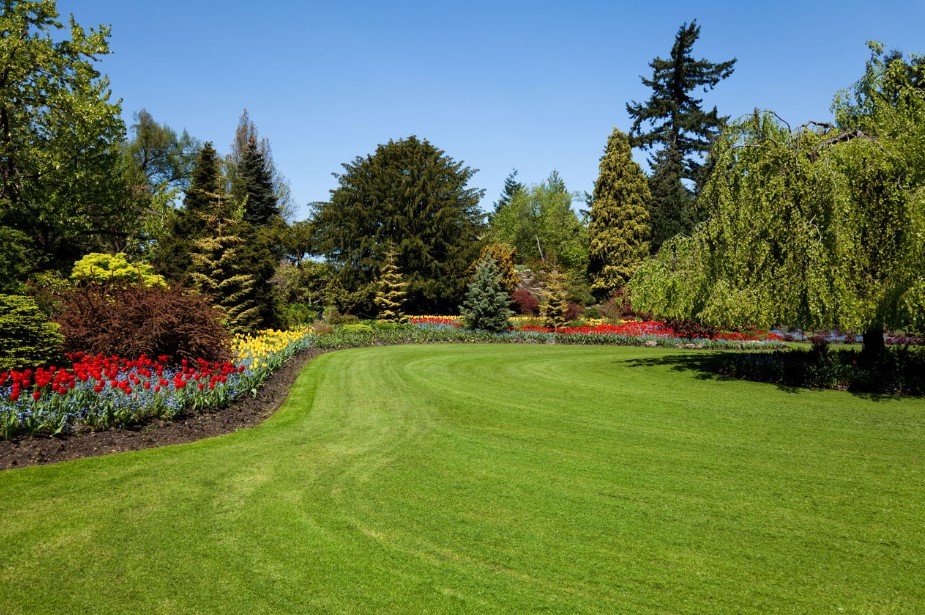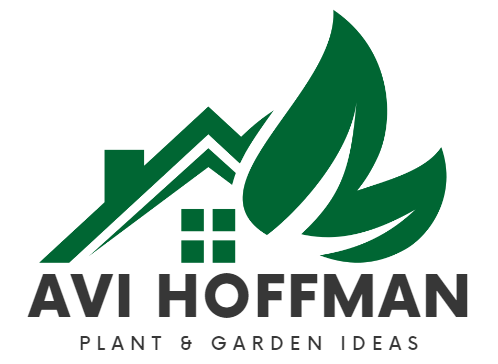In recent years, homeowners and landscape enthusiasts have explored alternative turf options to traditional grass lawns. One such alternative that has gained popularity is the Dichondra lawn. This low-growing, perennial ground cover offers a unique aesthetic and several advantages over conventional grass lawns. However, like any landscaping choice, it also comes with its own set of drawbacks. In this article, we will delve into the pros and cons of a Dichondra lawn to help you decide on your outdoor space.
Pros of a Dichondra Lawn:
- Drought Tolerance:
Dichondra is known for its excellent drought tolerance. It has a deep root system allows it to access water stored in the soil, making it an ideal choice for regions with limited water availability; this can significantly reduce water consumption and help conserve this valuable resource.
- Low Maintenance:
Compared to traditional grass lawns, dichondra requires minimal maintenance. It grows slowly and has a prostrate growth habit, meaning it creeps along the ground rather than growing upright. As a result, mowing requirements are reduced, saving you time and effort. Furthermore, it rarely needs fertilization, as it is naturally resistant to many pests and diseases.
- Dense and Lush Appearance:
One of the standout features of a dichondra lawn is its dense and lush appearance. Its small, circular leaves create a beautiful carpet-like effect, giving your yard an attractive and eye-catching appeal. The vibrant green color and the soft texture underfoot make it an inviting surface for outdoor activities and relaxation.
- Weed Suppression:
When properly established, dichondra forms a thick mat that effectively suppresses weed growth. Its dense coverage leaves little room for weeds to take root and flourish, reducing the need for chemical weed control; this saves you money and contributes to a healthier and more environmentally friendly lawn.

Cons of a Dichondra Lawn:
- Sensitivity to Foot Traffic:
One of the primary drawbacks of Dichondra lawns is their sensitivity to foot traffic. Unlike traditional grass lawns that can withstand heavy use, dichondra is less resilient. Constant foot traffic can cause the plants to flatten and lose their lush appearance. It is best suited for areas with lighter use, such as decorative lawns or side yards.
- Slow Establishment:
Establishing a dichondra lawn can be a time-consuming process. It has a slower growth rate than grass, which may take several weeks or months to develop fully; this means that your lawn may appear patchy or sparse during the establishment phase. Patience and proper care are essential during this period to ensure successful establishment.
- Temperature and Shade Sensitivity:
Dichondra thrives in warm climates and prefers total sun exposure. It can struggle in areas with cooler temperatures or excessive shade. In regions with harsh winters, dichondra may go dormant or even die back entirely. A Dichondra lawn may not be your best choice if you live in a cooler climate or have significant shade in your yard.
- Limited Availability:
Compared to traditional grass varieties, dichondra can be harder to find in some areas. Not all nurseries or garden centers may stock dichondra seeds or plugs, making them less accessible for homeowners. Additionally, finding a local landscaper experienced in installing and maintaining dichondra lawns may pose a challenge in certain regions.

Conclusion For Dichondra Lawn Pros and Cons:
A dichondra lawn offers several advantages, including drought tolerance, low maintenance, an attractive appearance, and weed suppression. However, considering its limitations, such as sensitivity to foot traffic, slow establishment, temperature and shade requirements, and limited availability, is vital. By weighing these pros and cons against your specific needs and preferences, you can decide whether a Dichondra lawn is the right choice for your outdoor space. Read article about The Impact of To Much Peat Moss on Grass Seed and White Spots on Basil Leaves in Avi Hoffman Garden.
FAQ
The suitability of dichondra depends on your specific needs and preferences. It offers several advantages, such as drought tolerance, low maintenance, an attractive appearance, and weed suppression. However, it also has limitations, including sensitivity to foot traffic, slow establishment, temperature and shade requirements, and limited availability. Considering these factors and determining if they align with your desired lawn characteristics and environmental conditions is essential before deciding if Dichondra is a good fit.
Dichondra thrives in warm climates and prefers total sun exposure. It grows best in well-drained soil with a pH of 5.6 to 7.5. Providing adequate water during the establishment phase is vital, but Dichondra has good drought tolerance once established. It is not suitable for areas with heavy foot traffic or excessive shade. Additionally, dichondra may struggle in regions with colder temperatures or harsh winters.
While dichondra requires regular watering during the establishment phase, it is essential to avoid overwatering. Overwatering can lead to issues such as root rot and fungal diseases. It is recommended to water dichondra profoundly and infrequently, allowing the soil to dry out slightly between waterings. Once established, dichondra has good drought tolerance and should not be consistently overwatered.
No, dichondra is not the same as clover. While they may have some similarities in appearance, they are different plant species. Dichondra is a low-growing, perennial ground cover with small, circular leaves that create a dense carpet-like effect. It is often used as an alternative to grass lawns. Clover, on the other hand, is a legume plant with three-lobed leaves and distinctive flowers. It is commonly found in yards and is often considered a weed by some homeowners.







